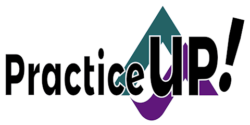From your first contact with a potential client, whether it’s by phone or in person, keep track of what you learn and what you’ve promised.
When you get started, you may think, “Why do I need to write down every detail? I can remember what I told him!”
But what if the prospective client doesn’t call you back for several weeks? Or what happens the minute you have a second client with similar needs? Even if it’s just an inquiry – you’ll begin to mix up their stories, their needs, your promises – any part of the conversations with them. What you tell a prospective this week might be entirely different than what you’ll need to tell her in a few weeks. But to be consistent, and to sound professional, you need to have documentation to remind you of what you told her.
In fact, you’ll want to track much more than you can carry around in your head, no matter how well you remember things. The best practice is to record everything – from client details to family members, providers, medications, and new prescriptions, discussion summaries, to-do lists, decisions, ideas, wishes, advance directives (as appropriate), other documentation and its location – anything that might be helpful at another time.
Find a good record keeping system for yourself. Some advocates keep a physical filing system – folders in drawers, maybe three-ring binders or spiral notebooks. For others, wordprocessors and a scanner work well to keep track digitally. You might even choose to use a client tracking software program called CRM (Customer Relationship Management System.) (One bit of advice for any cloud management service is to be sure it is HIPAA compliant.)
As your work continues, you’ll need to continually update these records, too. They are dynamic representations of your work with a client. Further, once your work is complete, there will be parts of your records you’ll want to turn back over to them.
 This includes time tracking, by the way. Since your billing is (at least partially dependent) on the time you spend with a client, you need to track time closely. Even if you can’t bill for extra time, you’ll most certainly learn better how to estimate the time any given task takes to complete. You can use that information for future estimates.
This includes time tracking, by the way. Since your billing is (at least partially dependent) on the time you spend with a client, you need to track time closely. Even if you can’t bill for extra time, you’ll most certainly learn better how to estimate the time any given task takes to complete. You can use that information for future estimates.
Finally, if your client makes a decision based on information you provide, be sure you record the decision, date it, and get his signature to protect your own practice from any later accusation that you made a decision on his behalf. For example, you might provide names of several specialists. Do that by writing their names down on paper, have your client circle his or her choice, then sign and date the paper. Keep that in your records. Alternatively, if you send that information in an email, have them type a reply with their choice and a statement saying it is their choice to see that specialist. Then, of course, include that signature in your documentation. That protects YOU.
Being a consistent and constant documentor will reap benefits for your clients, for their care, for the cost of their care, and for you as a professional advocate.
Like PUP! TIPS?
Subscribe to find a new tip in your inbox twice a month! Sign Up for TIPS
Sign Up for TIPS


Documentation is key to our work. It provides a repository for what we do, say and recommend. It provides our defense if find we have to defend our selves for payment or in a legal situation. Documentation also allows us to prove our outcomes. Give yourself time to document. It is worth the effort!
What type of software are nurse advocates using? I just got my certification and am trying to determine the best documentation approach other than excel or work. Something you can generate reports from.
Any insight would be helpful.
Thank you
The Alliance of Professional Health Advocates (our sister site, APHA) maintains a list of possibilities for managing your clients. If you are a member of APHA, you can find that list here.